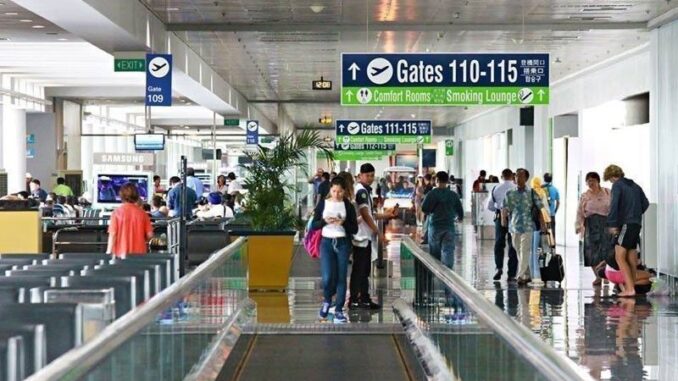
All systems are go for the takeover by the private sector of the maintenance and operations of the country’s primary gateway – the Ninoy Aquino International Airport – on Sept.14.
This is good news for Filipinos who already dread leaving from or arriving at NAIA because of either their own harrowing experiences or accounts from other persons, especially foreigners.
NAIA has long been a source of embarrassment for the Philippines and for Filipinos. It has consistently been named as one of the worst airports in the world.
Just last February, NAIA was named as the fourth worst gateway in Asia and the Middle East by business class travelers. In a list drawn up by businessfinancing.co.uk, NAIA obtained a score of 2.78 on a scale of one to 10, with 10 being the highest. Noi Bai International Airport in Vietnam and Changi Airport in Singapore have been ranked as the world’s best and second best with averages of 6.8 and 6.63, respectively.
NAIA also ranked 199th out of 239 airports from 69 countries in the 2024 global airport ranking report released by flight compensation company AirHelp.
The Philippine Institute for Development Studies last year said that the airport suffered from both passenger and runway congestion.
Last July, Sen. Raffy Tulfo even filed a resolution seeking to investigate the long passenger lines and malfunctioning electronic gates at NAIA. In the resolution, he said there is a need to evaluate the current situation and operational improvement and ensure that international aviation standards are complied with.
With NAIA about to be rehabilitated and operated by a consortium led by diversified conglomerate San Miguel Corp. (SMC), which recently bagged a 15-year P170.6-billion concession extendible for another 10 years, then NAIA definitely has a chance to redeem itself and bring back its lost glory.
The contract between the government and the New NAIA Infrastructure Corp. (NNIC) will require the latter to invest a minimum of P122.3 billion or P4.89 billion a year to upgrade the airport.
The SMC SAP & Co. Consortium, which later was incorporated to become NNIC, bagged the contract after besting two other qualified bidders when the consortium offered to allocate 82.1 percent of NAIA’s revenues to the government. Aside from the revenue share, the winning bidder is also required to pay an upfront amount of P30 billion and P2 billion annually.
Government expects a total of P900 billion in revenues over a 25-year concession period, which includes the upfront payment, the annual fees and the government’s 82-percent share.
SMC chairman and chief executive officer Ramon Ang recently said that they would implement a new terminal assignment for local and foreign airlines before Nov. 1 to improve the efficiency of runway use and to allow the airport to accommodate more flights. At present, NAIA Terminal 1 is exclusively for international flights while Terminals 2 and 4 are for domestic ones. Terminal 3 accommodates both.
He revealed that they are studying reassigning the airlines to certain terminals so that all their international and domestic flights would operate from there. For instance, Cebu Pacific will be assigned Terminal 1, Philippine Airlines will be at Terminal 2, and Terminal 3 will be for all international airlines.
The group is tasked with increasing the number of aircraft movements or takeoffs and landings per hour from 40 flights to 48 flights.
Under the NAIA rehabilitation plan, the airport’s passenger throughput is also expected to surge from 35 million to 62 million annually.
Ang also revealed that immediately after takeover, they would focus on first repairing the elevators, escalators, toilets, and airconditioning units. They will place self check-in counters and upgrade the baggage handling system to improve travel experience.
According to news reports, NNIC also plans to build a new passenger terminal building with an annual capacity of 35 million passengers. This will rise at the site of the abandoned Philippine Village Hotel, which is owned by the Manila International Airport Authority (MIAA) which at present operates NIA.
Meanwhile, an off-ramp connecting NAIAX to NAIA Terminal 3 is expected to be completed next year to improve the flow of traffic going in and out of the airport. The project is estimated to cost P3 billion to P5 billion.
Ang emphasized that what is important for him overall is the passenger’s comfort and how to be able to decongest NAIA and make it look prim and proper. Moving forward, he said that their investment in NAIA would be good for both the company and for the Filipino people.
There is no way for NAIA to go but up. But with the SMC group at the helm of NAIA’s upcoming rehabilitation and privatization, we can expect much more than a facelift and minimum improvements.
For comments, email at [email protected].


Be the first to comment